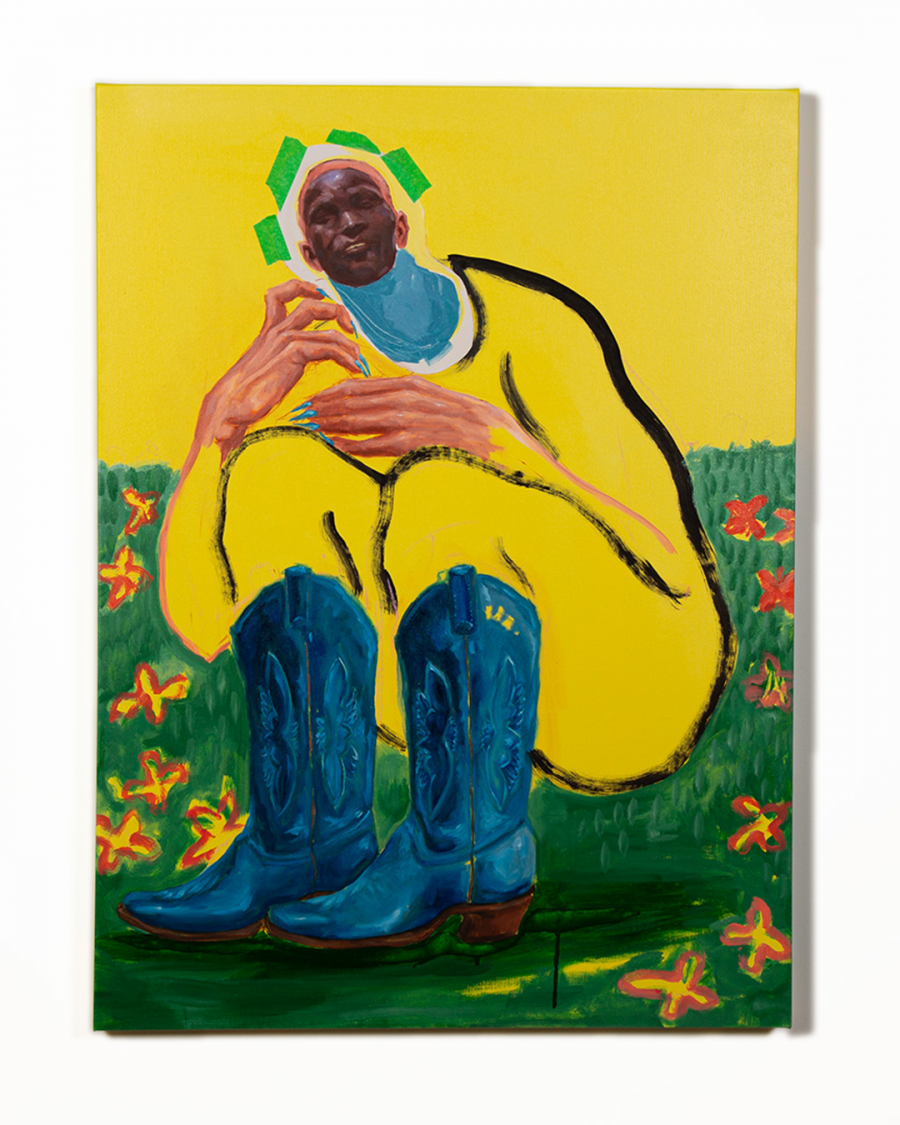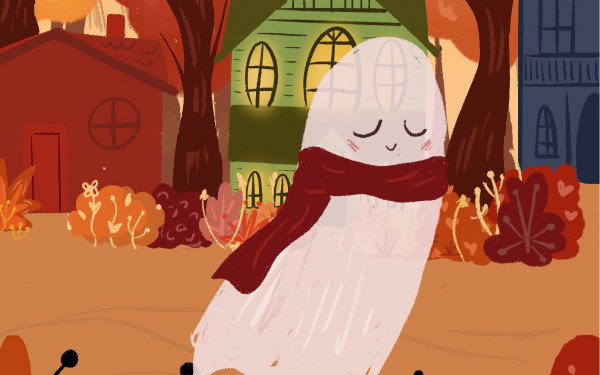Catherine Morin paints a satirical portrait of class
Using oil and acrylic paint, her work explores social and economic norms and values
Striking colours and bold, confident figures line the walls of Catherine Morin’s booth at SCOPE Miami Beach.
Morin, a multidisciplinary artist based in Montreal, carefully places every element in her work. The character takes up the largest space in the painting and symbols such as baskets of fruit and rakes are used to evoke manual labour.
She paints workers, especially those involved in physical labour, highlighting their dignity, courage and accomplishments. She explained that it's often easiest to address thematic elements that are more personal and based on lived experiences. She recalls her first trip abroad to Manzanillo, Mexico. Morin was 11-years-old but still remembers each member of her family wearing a shawl that they haggled from a child on the beach and queuing up for the buffet where tourists could gorge themselves excessively.
“I don't recall us stepping out of our golden castle,” she said. “There's clearly something awkward and unhealthy about it. It carries an air of silent colonialism. We're all going to plunder the neighbour poorer than us. I wanted to represent it, in a critical yet slightly whimsical manner. A satirical look at ourselves.”
Her series “petits travailleurs”, for example, was inspired by the term “petites mains”. “Petites mains” often refers to low-paid, underqualified workers or people employed to do menial jobs. The paintings in the series feature portraits of blurred faces in front of pastoral landscapes. Despite the faces being front and centre, they are hard to identify, representing workers who are often underappreciated or forgotten.

Her exploration of working class people doesn’t end with portraits.
“I often depict hands and feet in an atrophied, twisted and deformed manner, almost as a hindrance to ease. They say there are no menial jobs, but what about our actual perception of the people who do them?” she said.
She explained that in America, there is an illusion that everything is based on meritocracy. The message “If you're in America, there are no excuses for failure” seems to be ever present but access to equal opportunities is less straightforward.
Her work was most recently featured at the 22nd edition of SCOPE Miami Beach in Miami, Florida. Using the theme No Black and White, the international contemporary art show showcased work from underrepresented artistic voices across the 20th and 21st centuries.
“Our curatorial committee chose Catherine Morin to show at SCOPE as we found her work to be bold and impactful,” said Edie Meyer, director of exhibitor relations. “Her skill as a painter is obvious as well as her distinctive style.”
When Morin begins a new painting, she starts with the face without knowing what comes next.
“As I build them, I feel like I'm establishing a dialogue with them, creating a story for them as the painting progresses. There's always a bit of myself intertwined with them,” she explained.
While she’s currently known for her brightly-coloured paintings that explore themes of social class, culture, and identity, her artistic career began with photographs.
At 17, Morin moved to Montreal where she completed a diploma of vocational studies in photography at the Centre de services scolaire Marguerite-Bourgeoys. She was living in an apartment and struggling to find work but realized she could get by with a part-time job, as rent was more affordable at the time. It gave her the freedom to dedicate time to painting and eventually, she started working as a painter on film and theatre sets.
"I've always drawn, as far back as I can remember. So, [painting] was a natural progression of my childhood interests,” she said. “I love the physicality of things in general; it helps me understand. I find it more tangible.”
Alabama-based artist Ana Sneeringer attended SCOPE and explained that Morin's exploration of individuals and societal adjustments resonated with her own artistic inclinations. When she stepped into the Wishbone Gallery at SCOPE, her attention was immediately drawn to the vibrant exhibition featuring Morin's artwork.
“A fascinating nuance in Morin's work is the intentional absence of eyes in all her figures," said Sneeringer. “This deliberate choice adds an enigmatic layer to her pieces, prompting viewers to delve into the complexities of personal and social narratives.”


_600_832_s.png)




_600_375_s_c1.png)